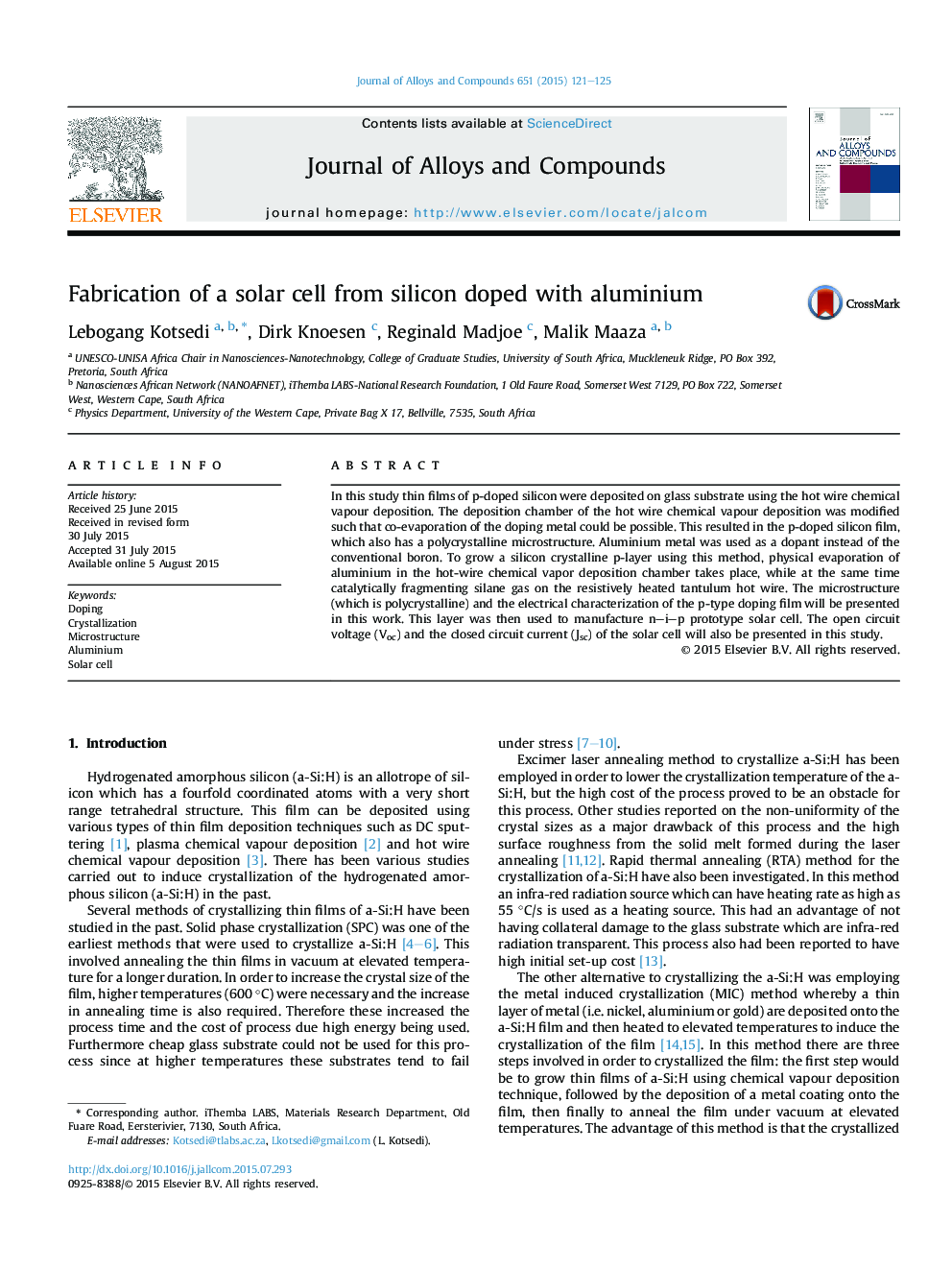| Article ID | Journal | Published Year | Pages | File Type |
|---|---|---|---|---|
| 1608025 | Journal of Alloys and Compounds | 2015 | 5 Pages |
•Crystallization and p-doping.•Thermally stable p-layer.•Prototype solar cell.
In this study thin films of p-doped silicon were deposited on glass substrate using the hot wire chemical vapour deposition. The deposition chamber of the hot wire chemical vapour deposition was modified such that co-evaporation of the doping metal could be possible. This resulted in the p-doped silicon film, which also has a polycrystalline microstructure. Aluminium metal was used as a dopant instead of the conventional boron. To grow a silicon crystalline p-layer using this method, physical evaporation of aluminium in the hot-wire chemical vapor deposition chamber takes place, while at the same time catalytically fragmenting silane gas on the resistively heated tantulum hot wire. The microstructure (which is polycrystalline) and the electrical characterization of the p-type doping film will be presented in this work. This layer was then used to manufacture n–i–p prototype solar cell. The open circuit voltage (Voc) and the closed circuit current (Jsc) of the solar cell will also be presented in this study.
Graphical abstractReal-time thermal RBS spectrometry spectra of a film prepared by doping silicon with aluminum using both physical and chemical vapour deposition in a single reaction chamber. Thermal stability of the grown doped polycrystalline film was tested using the in-situ Rutherford backscattering spectrometry. The temperature was ramped up to 375 °C at the ramp rate of 1 °C/min while collecting spectrum every 2 s. Only selected spectra are plotted to show the stability of the film. From this results it can be concluded that the aluminium incorporated in the silicon film is not migrating nor diffusing in the film due to thermal effects.Figure optionsDownload full-size imageDownload as PowerPoint slide
